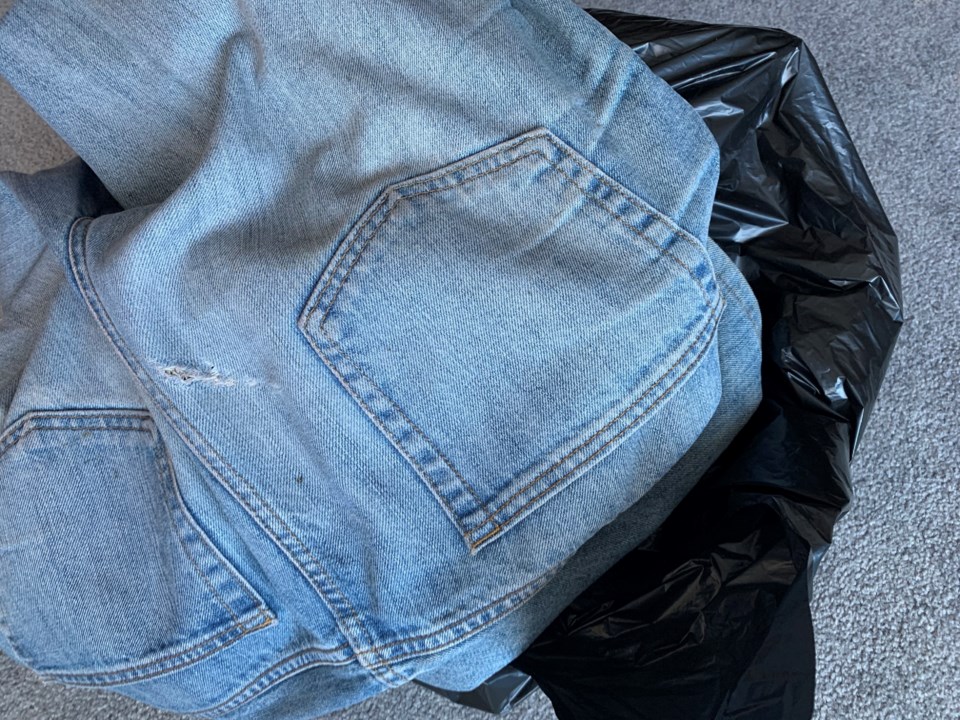City Council will take a look at banning textiles like clothing and curtains from regular garbage pickup, when it meets in committee Tuesday.
It will likely be a two-pronged approach with an education campaign focused on raising awareness about options for the reduction, reuse and recycling of textiles and a ban the collection and disposal of textiles in the general garbage collection.
The staff report from Al Tomek, Waste Management Coordinator says the average Canadian generates approximately 37 kilograms (82 lbs)of textiles a year.
This waste stream is composed of clothing, drapes, sheets, towels, shoes and other accessories.
"A recent trend in the clothing industry is known as 'fast fashion' which has significantly increased the volume of textiles produced and disposed of," says Tomek. "Companies are now designing and producing inexpensive clothing designed to be purchased, worn and discarded. This practice has many environmental implications, not only in the production and transportation of clothing but also from a waste management perspective."
About 2,800 litres of water are required to manufacture one cotton T-shirt.
Currently, it is estimated that North Bay generates approximately 1890 tonnes of unwanted textiles on an annual basis, of which 85 per cent will be destined for the landfill.
"North Bay residents have several options for diverting their unwanted textiles from the landfill. Items can be given away to family and friends, sold online or at garage sales," according to the report. "There are also a few non-for-profit and for-profit organizations that will accept the items or sometimes are willing to provide a collection service from their homes. There are also a few organizations that provide containers on private property where residents can drop off their goods."
Donated textiles to organizations are usually sorted and graded based on the quality and re-sale value. Approximately 25 per cent of donated textiles will be sold for re-use, 30 per cent will be sent overseas to be sold, 40 per cent are recycled into rags and insulation and the remaining 5 per cent will be landfilled says Tomek.
"The City can increase residential awareness through an education campaign delivered through existing communication channels to raise awareness. Communication tools such as the Blue Box Collection Calendar, the North Bay recycle app, the City’s website and other social media methods can be used to raise public awareness about the environmental harm generated by the manufacturing of clothing as well the resources being wasted by not reusing or recycling textiles. The City could also allocate some of the advertising budget to advertise and produce brochures and other educational materials to be delivered to North Bay residents."
The City of North Bay currently has a collection and landfill ban on old corrugated cardboard and a curbside collection ban on electronic products. In both cases, residents are forced to recycle their cardboard and electronics.
"It would not be the intention to have waste collectors open garbage bags and visually inspect the contents for textiles," says Tomek. "However should textiles be present in a garbage receptacle; the receptacle would be left with a notification explaining the reason. Residents would then be forced to have their textiles picked up by one of the organizations that provide collection services or be forced to deliver their textiles to an organization that accepts them.
"Some municipalities have implemented clear bag programs, all waste must be placed in clear plastic bags, to make the identification of banned materials in the waste stream more visible for waste collectors. Clear bag programs do accomplish better bylaw enforcement, however, it also adds to the problem of a single-use for a plastic product. Also from a landfill perspective, it is more environmentally responsible to have the waste not contained in a plastic bag as this leads to a much faster decomposition process," explained Tomek in his report.
